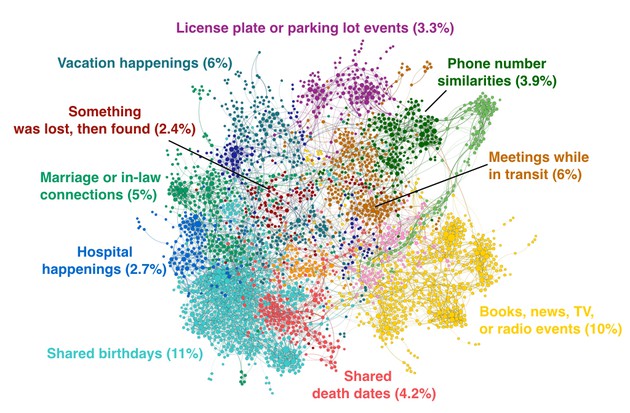
Sometimes coincidences pass us by and we don’t even notice. Although later you might recognize some of them if the incidents come to mind, and you might wonder how you hadn’t recognized them immediately. For example, say you bump into another car in a parking lot as you were both backing out of your spots. You exchange insurance info and write down the car license of the other person’s vehicle. Only later, when you look at it, you realize the numbers on that license plate are identical to the numbers on yours…except in reverse. Beyond that you see now the person’s first name is the same as your spouses, who you were arguing with awhile before the accident. But you didn’t notice those two coincidences until later.
Once you notice a coincidence, you may write it off as just chance, or you might suspect that it happened for a deeper reason, in other words a meaningful coincidence—aka a synchronicity.
David Spiegelhalter at the University of Cambridge collected 4,470 coincidences, and found the 58 percent of them included words related to family or loved ones. That suggests that people are more likely to notice coincidence involving people close to them.
Spiegelhalter’ s research was featured in an article on coincidence that appeared in The Atlantic on May 6, 2016.
An analysis made of the findings found that the five most common types of coincidences were about:
- Sharing a birthday with someone (11 percent)
- Connections involving books, TV, radio, or the news (10 percent)
- Vacation-related coincidences (6.1 percent)
- Meeting people in transit—while walking around, in airports, or on public transportation (6 percent)
- Coincidences related to marriage or in-laws (5.3 percent).
Notice that two of the categories involve travel – vacation or in-transit synchros. Those are quite common and the subject of our book, The Synchronicity Highway. Coincidences related to marriage—like divorce and hospital visits—are about life events involving our emotions, which was one of our categories in our book,The 7 Secrets of Synchronicity. If you notice the patterns in the graphic at the top, the findings also show a lot of connections with numbers and dates, which often appear in clusters—another category in 7 Secrets.
Academics who study coincidence tend to be most interested in categorizing and quantifying, a traditional method of analysis. But it’s also a dry one. Because what people mostly want to know about their synchronicities is what do they mean? That’s a subject that is difficult to quantify. As the author of the Atlantic article wrote: “What I learned writing a feature about coincidences is that a coincidence is in the eye of the beholder. Or rather, the mind of the beholder.”








Don’t know where you find your graphics but they are always fantastic, visually apropos.
Rob found this one and wrote the post. I’ll ask him where the graphics come from. I think it’s terrific, too.
Interesting information. Thanks!
There have been some new revelations on the Susan Yantorno story that we did recently. Stay tuned!